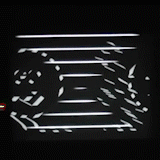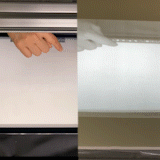Active-Perception
Concept
Human sensorial modalities are inherently limited, as is our cognitive capacity to process information gathered by the senses. Technologically mediated sensory manipulation, if properly implemented, can alter perception or even generate completely new forms of perception. At a practical level, it can improve the efficiency of (low or high level) recognition tasks such as behaviour recognition, as well as improve human-to-human interaction. Such enhancements of perception and increased behavior recognition also allow for the design of novel interfaces to incude active interactions. The problems of human perception and machine perception are reciprocally related; machine perception has its own limitations but can be trained to recognize self-perception, social perceptions, and emotional expressions.
Active Perception is an umbrella term for the theory and research practice concerned with the capture and manipulation of information that is normally inaccessible to humans and machines. In doing so, we hope to create new ways of perceiving the world and interacting with technology, and activeness of both humans and machines will be enable to be available. Our group is not only concerned with intelligent sensors and systems technology, but also augmented reality, human-computer interaction, media art, neurophysiology, perspectives, civil engineering from fields such as ethics and computer-supported cooperative-work. Combining techniques we aim to integrate human and machine perception and as a consequence create a new interdisciplinary research area.




Research Topics
Meta-Displays & Meta-Spaces
- Bilateral Motion Display: Multiple Visual Perception Depending on Motions (2019-)
- Achromatic System for Subjective Colors in Benham's Top (2019-)
- Compensatory Presentation of Moving Illusion Snchronized with Eye Movement (2018-)
- Coloring Method of Black-and-White High-Speed Projection Images (2018-)
- High Speed Gesture UI for Three Dimensional Display zSpace (2013-)
- Crafting Deformable Interfaces to Physically Augment Smartphones (2014)
- AIRR Tablet: Floating Display with High-Speed Gesture UI - Interactive Display in 3D Free Space - (2013-)
- VibroTracker (2012-)
- Visual and Tactile Cues for High-Speed Interaction (2012-)
Tracking & expression interfaces
- Assist System to Accelerate Human Object Grasping with a Solenoid Actuator (2024-)
- Dynamic Marker using Laser Heating(2021-)
- Effects of Low Video Latency between Visual Information and Physical Sensation in Immersive Environments (2018-)
- High Speed Gesture UI: Ultra Low latency with Proprioception (2010-)
- Light Arrays (2010-)
- A "sensing display" based on a cameraless Smart Laser Projector (2010-)
Active sensing & its application
- Self-localization using Tunnel Lighting Recognition(2023-)
- Silk-Printed Retroreflective Markers for Infrastructure-Maintenance Vehicles in Tunnels(2022-)
- Extended Capture Range Method Under High-Speed Motion(2020-)
- Capturing thermography image using motion blur compensation to detect peeling and floating(2019-)
- Motion blur compensation using a rotated cube (2018-)
- Real-time Robust Lane Detection Method at a Speed of 100 km/h for a Vehicle-mounted Tunnel Surface Inspection System (2018-)
- Research on Advanced Inspection on Highways (2014-)
- Pixel-wise Deblurring Imaging (2013-)



